SpringBoot运行流程源码分析------阶段三(Spring Boot外化配置源码解析)
Spring Boot外化配置源码解析
外化配置简介
Spring Boot设计了非常特殊的加载指定属性文件(PropertySouce)的顺序,允许属性值合理的覆盖,属性值会以下面的优先级进行配置。
- home目录下的Devtool全局设置属性(~/.spring-boot-devtools.properties,条件是当devtools激活时)
- @TestPropertySource注解的测试用例。
- @SpringBootTest#properties注解的测试用例。
- 命令行参数。
- 来自SPRING_APPLICATION_JSON的属性(内嵌在环境变量或系统属性中的内联JSON)
- ServletConfig初始化参数
- ServletContext初始化参数
- java:comp/env的JNDI属性
- Java系统属性(System.getProperties())
- 操作系统环境变量
- RandomValuePropertySource,只包含random.*中的属性
- jar包外的Profile_specific应用属性(application-{profile}.propertis和YAML变量)
- jar包内的Profile_specific应用属性(application-{profile}.propertis和YAML变量)
- jar包外的应用配置(application.properties和YAML变量)
- jar包内的应用配置(application.properties和YAML变量)
- @Configuration类上的@PropertySource注解
- 默认属性(通过SpringApplication.setDefaultProperties指定)
在以上配置方式中,我们经常使用的包括:命令参数,属性文件,YAML文件等内容,以下将围绕他们的运行及相关代码进行讲解。
ApplicationArguments参数处理
ApplicationArguments提供了针对参数的解析和查询功能。在Spring Boot运行阶段的章节中我们提到过,通过SpringApplication.run(args)传递的参数会被封装在ApplicationArguments接口中。本节我们来详细了解下ApplicationArguments接口。
接口定义及初始化
首先看一下ApplicationArguments接口的具体方法定义及功能介绍。
package org.springframework.boot;import java.util.List;
import java.util.Set;public interface ApplicationArguments {//返回原始未处理的参数(通过application传入的)String[] getSourceArgs();//返回所有参数的集合,如参数为:--foo=bar --debug,则返回【"foo","debug"】Set<String> getOptionNames();//选项参数中是否包含指定名称的参数boolean containsOption(String name);//根据选项参数的名称获取选项参数的值列表List<String> getOptionValues(String name);//返回非选项参数列表List<String> getNonOptionArgs();}
通过接口定义可以看出,ApplicationArguments主要提供了针对参数名称和值的查询,以及判断是否存在指定参数的功能。
在Spring Boot的初始化运行过程中,ApplicationArguments接口的实例化操作默认是通过实现类DefaultApplicationArguments来完成的。DefaultApplicationArguments的底层又是基于Spring框架中的命令行配置源SimpleCommandLinePropertySource实现的,SpringCommandLinePropertySource是PropertySource抽象类的派生类。
以下代码中内部类Source便是SimppleCommandLinePropertySource的子类。
public class DefaultApplicationArguments implements ApplicationArguments {private final Source source;private final String[] args;public DefaultApplicationArguments(String... args) {Assert.notNull(args, "Args must not be null");this.source = new Source(args);this.args = args;}......private static class Source extends SimpleCommandLinePropertySource {......}}
我们再来看SimpleCommandLinePropertySource的构造方法,通过代码会发现默认使用spring的SimpleCommandLineArgsParser对args参加进行解析。
public class SimpleCommandLinePropertySource extends CommandLinePropertySource<CommandLineArgs> {public SimpleCommandLinePropertySource(String... args) {super((new SimpleCommandLineArgsParser()).parse(args));}//重载的构造方法public SimpleCommandLinePropertySource(String name, String[] args) {super(name, (new SimpleCommandLineArgsParser()).parse(args));}......
}
除了构造方法之外,SimpleCommandLinePropertySource还提供了不同类型参数信息的获取和检查是否存在的功能,代码如下:
public class SimpleCommandLinePropertySource extends CommandLinePropertySource<CommandLineArgs> {......//获取选项参数数组 public String[] getPropertyNames() {return StringUtils.toStringArray(((CommandLineArgs)this.source).getOptionNames());}//获取是否包含指定name的参数protected boolean containsOption(String name) {return ((CommandLineArgs)this.source).containsOption(name);}//获取指定name的选项参数列表@Nullableprotected List<String> getOptionValues(String name) {return ((CommandLineArgs)this.source).getOptionValues(name);}//获取非选项参数列表protected List<String> getNonOptionArgs() {return ((CommandLineArgs)this.source).getNonOptionArgs();}
}
ApplicatinArguments,或者更进一步说是SimpleCommandLinePropertySource对参数类型是有所区分的,即选项参数和非选项参数。
选项参数必须以“–”为前缀,参数值可为空,该参数可以通过Spring Boot属性处理后使用,比如在执行jar -jar命令时,添加选项参数“–app.name=spring boot start",在代码中可以通过注解@Value属性及其他方式获取到该参数的值。该参数可以通过逗号分隔多个参数值,或者多次使用同一个参数来包含多个参数的值。
非选项参数并不要求以“–”前缀开始,可自行定义。非选项参数可以直接在jar -jar命令中定义参数为“non-option"的参数值。
以上所说的选项参数和非选项参数的解析是在SimpleCommandLinePropertySource构造方法中调用SimpleCommandLineArgsParser中完成的,代码如下:
class SimpleCommandLineArgsParser {SimpleCommandLineArgsParser() {}//解析args参数,返回一个完整的CommandLineArgs对象public CommandLineArgs parse(String... args) {CommandLineArgs commandLineArgs = new CommandLineArgs();String[] var3 = args;int var4 = args.length;//遍历参数for(int var5 = 0; var5 < var4; ++var5) {String arg = var3[var5];//解析选项参数,以"--"开头if (arg.startsWith("--")) {String optionText = arg.substring(2, arg.length());String optionValue = null;String optionName;//判断是--foo=bar参数格式,还是-foo参数格式,并分别处理获取值if (optionText.contains("=")) {optionName = optionText.substring(0, optionText.indexOf(61));optionValue = optionText.substring(optionText.indexOf(61) + 1, optionText.length());} else {optionName = optionText;}if (optionName.isEmpty() || optionValue != null && optionValue.isEmpty()) {throw new IllegalArgumentException("Invalid argument syntax: " + arg);}commandLineArgs.addOptionArg(optionName, optionValue);} else {//处理非选项参数commandLineArgs.addNonOptionArg(arg);}}return commandLineArgs;}
}
通过SimpleCommandLineArgsParser的代码可以看出,Spring对参数的解析是按照指定的参数格式分别解析字符串中的值来实现的。最终,解析的结果均封装在CommandLineArgs中。而CommandLineArgs类只是命令行参数的简单表示形式,内部分为“选项参数”和"非选项参数"
class CommandLineArgs {private final Map<String, List<String>> optionArgs = new HashMap();private final List<String> nonOptionArgs = new ArrayList();CommandLineArgs() {}......
}
CommandLineArgs的核心存储结构包括:存储选项参数的Map<String,List>optionArgs和存储非选项参数的ListnonOptionsArgs。同时,针对这两个核心存储接口,SpringBoot也提供了相关的读写操作的方法。
SimpleCommandLineArgsParser解析获得的CommandLineArgs对象,最终会被SimpleCommandLinePropertySource的构造方法通过parser调用,一层层地传递到PropertySource类的构造方法中,最终封装到相应的属性当中。
public abstract class PropertySource<T> {protected final Log logger;//参数类别名称protected final String name;//参数封装类protected final T source;......
}
以在SimpleCommandLinePropertySource中的使用为例,最终封装在PropertySource中的结构为:name为“commandLineArgs”,source为解析出的CommandLineArgs对象。
而DefaultApplicationArguments的内部类Source作为SimpleCommandLinePropertySource的子类存储了以上解析的数据内容。同时,args参数的原始值储存在DefaultApplicationArguments的String[]args属性中。
命令行参数的获取
命令行参数就是在启动Spring Boot项目时通过命令行传递的参数。比如通过一下命令来启动一个Spring Boot项目。
jar -jar app.jar --name=SpringBoot
那么–name=SpringBoot是如何一步步传递到Spring内部的呢?
默认情况下,SpringApplication会将以上类似name的命令行参数(以“–”开头)解析封装成一个PropertySource对象,并将其添加到Spring-Environment当中,而命令行参数的优先级要高于其他配置源。
下面我们来通过代码来追踪启动过程中整个参数的获取,解析和分装过程。首先,参数是通过SpringApplication的run方法的args传递参数。
在SpringApplication的run方法中,通过以下操作先将args封装于ApplicationArguments中,然后又将封装之后的对象传递入prepareEnvironment方法。
public ConfigurableApplicationContext run(String... args) {......try {ApplicationArguments applicationArguments = new DefaultApplicationArguments(args);ConfigurableEnvironment environment = prepareEnvironment(listeners, applicationArguments);......}catch (Throwable ex) {handleRunFailure(context, ex, exceptionReporters, listeners);throw new IllegalStateException(ex);}......}
在prepareEnvironment方法中,通过applicationArguments.getSourceArgs()获得传递的参数数组,并作为参数调用configureEnvironment方法,此处获得的args依旧是未解析的参数值,代码如下:
private ConfigurableEnvironment prepareEnvironment(SpringApplicationRunListeners listeners,ApplicationArguments applicationArguments) {......configureEnvironment(environment, applicationArguments.getSourceArgs());......}
在configureEnvironment方法中又将参数传递给configurePropertySource方法。
protected void configureEnvironment(ConfigurableEnvironment environment, String[] args) {......configurePropertySources(environment, args);configureProfiles(environment, args);}
而在configurePropertySources方法中才对参数进行了真正的解析和封装
protected void configurePropertySources(ConfigurableEnvironment environment, String[] args) {//获取环境变量中的属性资源信息MutablePropertySources sources = environment.getPropertySources();//如果默认属性配置存在,则将其放置在属性资源的最后位置if (this.defaultProperties != null && !this.defaultProperties.isEmpty()) {sources.addLast(new MapPropertySource("defaultProperties", this.defaultProperties));}//如果命令行属性未被禁用且存在if (this.addCommandLineProperties && args.length > 0) {String name = CommandLinePropertySource.COMMAND_LINE_PROPERTY_SOURCE_NAME;//如果默认属性资源中不包含该命令则将命令行属性放置在第一位//如果包含则通过CompositePropertySource进行处理if (sources.contains(name)) {PropertySource<?> source = sources.get(name);CompositePropertySource composite = new CompositePropertySource(name);composite.addPropertySource(new SimpleCommandLinePropertySource("springApplicationCommandLineArgs", args));composite.addPropertySource(source);sources.replace(name, composite);}else {//不存在,则添加并放置在第一位sources.addFirst(new SimpleCommandLinePropertySource(args));}}}
因为configurePropertySources方法在之前章节中介绍过,下面针对命令行参数再次进行讲解和深入分析,重点介绍两个内容:参数的优先级和命令行参数的解析。
参数的优先级,从上面的代码注解中可以看到,configurePropertySources方法
- 第一步获得环境变量中存储配置信息的sources;
- 第二步判断默认参数是否为空,如果不为空,则将默认参数放置在sources的最后位置,这里已经明显反应了参数的优先级是通过顺序来体现的;
- 第三步如果命令行参数未被禁用,且不为空,则要么将原有默认参数替换掉,要么直接放在第一位,这一步中的替换操作也是另外一种优先级形式的体现。
在上面代码中,可以通过SpringApplication的setAddCommandLineProperties方法将其设置为false来禁用。命令行参数的解析用到了SimpleCommandLinePropertySource类,而该类的相关使用在上面以详细介绍过。下面将分析配置文件中的参数获取。
配置文件的加载
Spring Boot启动时默认会去加载classpah下的application.yml或application.properties文件。配置文件的加载过程中主要是利用了Spring Boot的事件机制来完成的,也就是我们之前说的SpringApplicationRunListeners中的environmentPrepared方法来启动加载配置文件的事件。通过该方法发布的事件会被注册到ConfigFileApplicationListener监听到,而实现资源的加载。
下面来通过源码的追踪分析这一过程。该事件同样是SpringApplication的run方法来完成的。前半部分的调用过程与上面命令行获取参数的方法调用一样,不同的是当执行到prepareEnvironment中,当执行完configureEnvironment方法之后,便通过事件发布来通知监听器加载资源。
private ConfigurableEnvironment prepareEnvironment(SpringApplicationRunListeners listeners,ApplicationArguments applicationArguments) {// Create and configure the environmentConfigurableEnvironment environment = getOrCreateEnvironment();// 配置环境,主要包括PropertySources和activeProfiles的配置configureEnvironment(environment, applicationArguments.getSourceArgs());ConfigurationPropertySources.attach(environment);//listeners环境准备listeners.environmentPrepared(environment);......}
该事件监听器通过EventPublishingRunListener的environmentPrepared方法发布一个ApplicationEnvironmentPreparedEvent事件
public class EventPublishingRunListener implements SpringApplicationRunListener, Ordered {......@Overridepublic void environmentPrepared(ConfigurableEnvironment environment) {this.initialMulticaster.multicastEvent(new ApplicationEnvironmentPreparedEvent(this.application, this.args, environment));}......
}在META-INF/spring.factories中注册的ConfigFileApplicationListener会监听到对应事件,并进行相应的处理。spring.factories中ConfigFileApplicationListener的注册配置如下:
# Application Listeners
org.springframework.context.ApplicationListener=\
org.springframework.boot.ClearCachesApplicationListener,\
org.springframework.boot.builder.ParentContextCloserApplicationListener,\
org.springframework.boot.context.FileEncodingApplicationListener,\
org.springframework.boot.context.config.AnsiOutputApplicationListener,\
org.springframework.boot.context.config.ConfigFileApplicationListener,\
org.springframework.boot.context.config.DelegatingApplicationListener,\
org.springframework.boot.context.logging.ClasspathLoggingApplicationListener,\
org.springframework.boot.context.logging.LoggingApplicationListener,\
org.springframework.boot.liquibase.LiquibaseServiceLocatorApplicationListener
在ConfiFileApplicationListener类中我们会看到很多与配置文件加载相关的常量。
public class ConfigFileApplicationListener implements EnvironmentPostProcessor, SmartApplicationListener, Ordered {private static final String DEFAULT_PROPERTIES = "defaultProperties";// 默认的加载配置文件路径private static final String DEFAULT_SEARCH_LOCATIONS = "classpath:/,classpath:/config/,file:./,file:./config/";//默认的配置文件名称private static final String DEFAULT_NAMES = "application";......//激活配置文件的属性名public static final String ACTIVE_PROFILES_PROPERTY = "spring.profiles.active";......
通过这些基本的常量,可以看出默认加载配置文件的路径和默认的名称。再回到刚才的事件监听,入口方法为ConfigFileApplicationListener的onApplicationEvent方法。
@Overridepublic void onApplicationEvent(ApplicationEvent event) {//对应当前发布的事件,执行次业务逻辑if (event instanceof ApplicationEnvironmentPreparedEvent) {onApplicationEnvironmentPreparedEvent((ApplicationEnvironmentPreparedEvent) event);}if (event instanceof ApplicationPreparedEvent) {onApplicationPreparedEvent(event);}}
上面调用onApplicationEnvironmentPreparedEvent方法如下,该方法会获得注册的处理器,遍历并依次调用postPropcessEnvironment方法。
private void onApplicationEnvironmentPreparedEvent(ApplicationEnvironmentPreparedEvent event) {List<EnvironmentPostProcessor> postProcessors = loadPostProcessors();postProcessors.add(this);AnnotationAwareOrderComparator.sort(postProcessors);//遍历并依次调用postProcessEnvironment方法for (EnvironmentPostProcessor postProcessor : postProcessors) {postProcessor.postProcessEnvironment(event.getEnvironment(), event.getSpringApplication());}}
其中EnvironmentPostProcessor接口的实现类也是在META-INF/spring.factories文件中注册的。
# Environment Post Processors
org.springframework.boot.env.EnvironmentPostProcessor=\
org.springframework.boot.cloud.CloudFoundryVcapEnvironmentPostProcessor,\
org.springframework.boot.env.SpringApplicationJsonEnvironmentPostProcessor,\
org.springframework.boot.env.SystemEnvironmentPropertySourceEnvironmentPostProcessor,\
org.springframework.boot.reactor.DebugAgentEnvironmentPostProcessor
ConfigFileApplicationListener本身也是EvironmentPostProcessor接口的实现类,可以跟着ConfigFileApplicationListener中postProcessEnvironment的调用链路代码一直往下看,会发现最后在其内部类Loader的load方法进行配置文件的加载操作。其中关于文件路径及其名称的组合代码如下:
// 1接口类,查找实现类ConfiFileApplicationListener
public interface EnvironmentPostProcessor {void postProcessEnvironment(ConfigurableEnvironment environment, SpringApplication application);
}// 2 ConfiFileApplicationListener实现类
@Override
public void postProcessEnvironment(ConfigurableEnvironment environment, SpringApplication application) {addPropertySources(environment, application.getResourceLoader());
}
// 3 addPropertySources
protected void addPropertySources(ConfigurableEnvironment environment, ResourceLoader resourceLoader) {RandomValuePropertySource.addToEnvironment(environment);new Loader(environment, resourceLoader).load();
}
// 4 load()
void load() {FilteredPropertySource.apply(this.environment, DEFAULT_PROPERTIES, LOAD_FILTERED_PROPERTY,(defaultProperties) -> {this.profiles = new LinkedList<>();this.processedProfiles = new LinkedList<>();this.activatedProfiles = false;this.loaded = new LinkedHashMap<>();initializeProfiles();while (!this.profiles.isEmpty()) {Profile profile = this.profiles.poll();if (isDefaultProfile(profile)) {addProfileToEnvironment(profile.getName());}load(profile, this::getPositiveProfileFilter,addToLoaded(MutablePropertySources::addLast, false));this.processedProfiles.add(profile);}load(null, this::getNegativeProfileFilter, addToLoaded(MutablePropertySources::addFirst, true));addLoadedPropertySources();applyActiveProfiles(defaultProperties);});
}
// 5 load()
private void load(Profile profile, DocumentFilterFactory filterFactory, DocumentConsumer consumer) {getSearchLocations().forEach((location) -> {boolean isFolder = location.endsWith("/");Set<String> names = isFolder ? getSearchNames() : NO_SEARCH_NAMES;names.forEach((name) -> load(location, name, profile, filterFactory, consumer));});
}
private void load(String location, String name, Profile profile, DocumentFilterFactory filterFactory,DocumentConsumer consumer) {......Set<String> processed = new HashSet<>();for (PropertySourceLoader loader : this.propertySourceLoaders) {for (String fileExtension : loader.getFileExtensions()) {if (processed.add(fileExtension)) {loadForFileExtension(loader, location + name, "." + fileExtension, profile, filterFactory,consumer);}}}}
在该方法中可以看到loadForFileExtension的第二个参数"文件路径+名称"和第三个参数"扩展名称"的拼接组成方式。location默认值就是常量DEFAULT_SEARCH_LOCATIONS的值。
在for循环中遍历的PropertySourceLoader也是在META-INF/spring.factories中注册的,并且在Loader的构造方法中通过SpringFactoriesLoader的loadFactories方法来获得。
# PropertySource Loaders
org.springframework.boot.env.PropertySourceLoader=\
org.springframework.boot.env.PropertiesPropertySourceLoader,\
org.springframework.boot.env.YamlPropertySourceLoader
当查看PropertiesPropertySourceLoader和YamlPropertySourceLoader两个加载器代码时,就会发现他们分别定义了所支持文件类型及其加载方法。PropertiesPropertySourceLoader支持配置文件类型的定义代码如下:
public class PropertiesPropertySourceLoader implements PropertySourceLoader {private static final String XML_FILE_EXTENSION = ".xml";@Overridepublic String[] getFileExtensions() {return new String[] { "properties", "xml" };}@Overridepublic List<PropertySource<?>> load(String name, Resource resource) throws IOException {Map<String, ?> properties = loadProperties(resource);if (properties.isEmpty()) {return Collections.emptyList();}return Collections.singletonList(new OriginTrackedMapPropertySource(name, Collections.unmodifiableMap(properties), true));}@SuppressWarnings({ "unchecked", "rawtypes" })private Map<String, ?> loadProperties(Resource resource) throws IOException {String filename = resource.getFilename();if (filename != null && filename.endsWith(XML_FILE_EXTENSION)) {return (Map) PropertiesLoaderUtils.loadProperties(resource);}return new OriginTrackedPropertiesLoader(resource).load();}}
YamlPropertySourceLoader支持配置文件类型的定义代码如下:
public class YamlPropertySourceLoader implements PropertySourceLoader {@Overridepublic String[] getFileExtensions() {return new String[] { "yml", "yaml" };}@Overridepublic List<PropertySource<?>> load(String name, Resource resource) throws IOException {if (!ClassUtils.isPresent("org.yaml.snakeyaml.Yaml", null)) {throw new IllegalStateException("Attempted to load " + name + " but snakeyaml was not found on the classpath");}List<Map<String, Object>> loaded = new OriginTrackedYamlLoader(resource).load();if (loaded.isEmpty()) {return Collections.emptyList();}List<PropertySource<?>> propertySources = new ArrayList<>(loaded.size());for (int i = 0; i < loaded.size(); i++) {String documentNumber = (loaded.size() != 1) ? " (document #" + i + ")" : "";propertySources.add(new OriginTrackedMapPropertySource(name + documentNumber,Collections.unmodifiableMap(loaded.get(i)), true));}return propertySources;}}
其中PropertiesPropertySourceLoader对文件的加载通过PropertiesLoaderUtils类(加载xml文件)和OriginTrackedYamlLoader类来完成,而YamlPropertySourceLoader对文件的加载主要通过OriginrackedYamlLoader来完成。
下面以PropertiesPropertySourceLoader使用的OriginTrackedPropertiesLoader为例进行源码分析。
PropertiesPropertySourceLoader中加载相关的代码如下:
public class PropertiesPropertySourceLoader implements PropertySourceLoader {private static final String XML_FILE_EXTENSION = ".xml";@Overridepublic String[] getFileExtensions() {return new String[] { "properties", "xml" };}//加载指定的配置文件@Overridepublic List<PropertySource<?>> load(String name, Resource resource) throws IOException {//调用load方法进行加载并返回Map形式的数据Map<String, ?> properties = loadProperties(resource);if (properties.isEmpty()) {return Collections.emptyList();}//对返回结果进行处理和转换return Collections.singletonList(new OriginTrackedMapPropertySource(name, Collections.unmodifiableMap(properties), true));}//具体加载过程@SuppressWarnings({ "unchecked", "rawtypes" })private Map<String, ?> loadProperties(Resource resource) throws IOException {String filename = resource.getFilename();//加载xml格式if (filename != null && filename.endsWith(XML_FILE_EXTENSION)) {return (Map) PropertiesLoaderUtils.loadProperties(resource);}//加载properties格式return new OriginTrackedPropertiesLoader(resource).load();}}
OriginTrackedPropertiesLoader的构造方法非常简单,只是把resource设置给其成员变量Resource。
class OriginTrackedPropertiesLoader {private final Resource resource;OriginTrackedPropertiesLoader(Resource resource) {Assert.notNull(resource, "Resource must not be null");this.resource = resource;}Map<String, OriginTrackedValue> load() throws IOException {return load(true);}//加载properties文件的数据并返回map类型//其中expandLists用于指定参数为"name[]=a,b,c"的列表是否进行扩展,默认为trueMap<String, OriginTrackedValue> load(boolean expandLists) throws IOException {//创建配置文件的readertry (CharacterReader reader = new CharacterReader(this.resource)) {Map<String, OriginTrackedValue> result = new LinkedHashMap<>();StringBuilder buffer = new StringBuilder();//读取文件中数据while (reader.read()) {//读取文件中的keyString key = loadKey(buffer, reader).trim();//可扩展列表的处理if (expandLists && key.endsWith("[]")) {key = key.substring(0, key.length() - 2);int index = 0;do {OriginTrackedValue value = loadValue(buffer, reader, true);put(result, key + "[" + (index++) + "]", value);if (!reader.isEndOfLine()) {reader.read();}}while (!reader.isEndOfLine());}else {//读取文件中value并封装为OriginTrackedValueOriginTrackedValue value = loadValue(buffer, reader, false);put(result, key, value);}}return result;}}
}
以上代码展示了OriginTrackedPropertiesLoader的load方法的核心功能:创建reader读取配置文件,获得配置文件中配置的key,获取配置文件中的value,封装key-value到map中并返回。
相关文章:
)
SpringBoot运行流程源码分析------阶段三(Spring Boot外化配置源码解析)
Spring Boot外化配置源码解析 外化配置简介 Spring Boot设计了非常特殊的加载指定属性文件(PropertySouce)的顺序,允许属性值合理的覆盖,属性值会以下面的优先级进行配置。home目录下的Devtool全局设置属性(~/.sprin…...
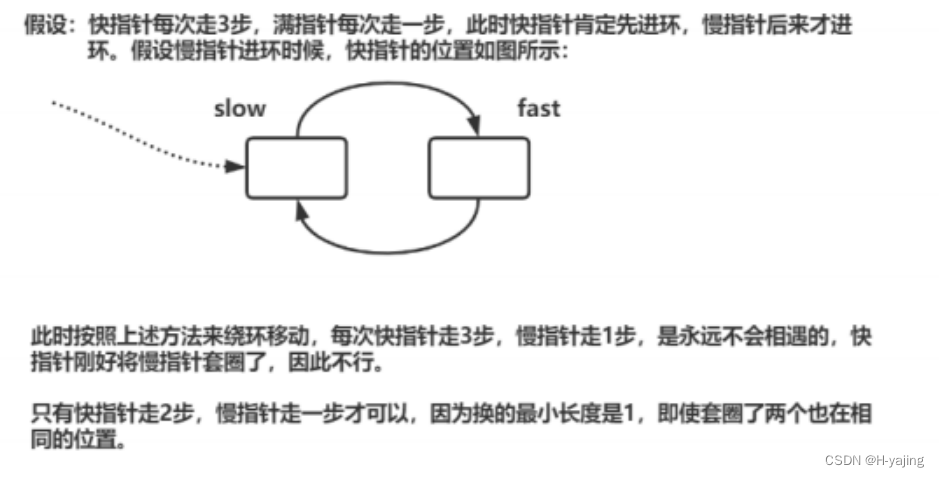
环形链表-力扣
一、题目描述 题目链接:力扣(LeetCode)官网 - 全球极客挚爱的技术成长平台 二、题解 解题思路: 快慢指针,即慢指针一次走一步,快指针一次走两步,两个指针从链表起始位置开始运行,…...

人生岁月年华
人生很长吗?不知道。只知道高中坐在教室里,闹哄哄的很难受。也记得上班时无聊敲着代码也很难受。 可是人生也不长。你没有太多时间去试错,你没有无限的时间精力去追寻你认为的高大上。 人生是何体验呢?人生的感觉很多吧。大多数…...
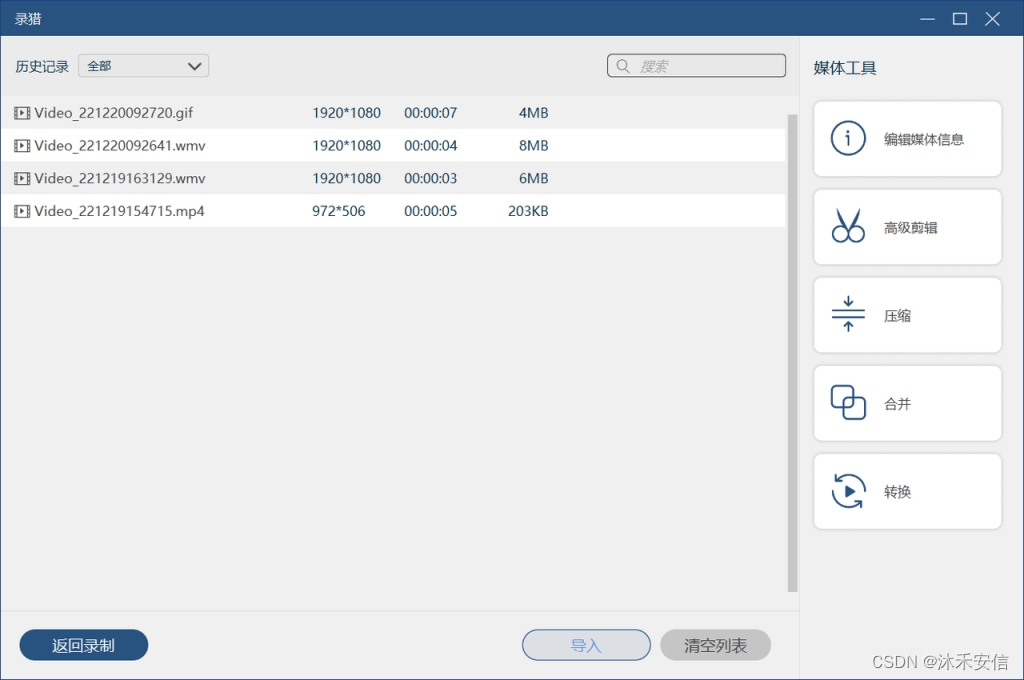
电脑QQ如何录制视频文件?
听说QQ可以录制视频,还很方便,请问该如何录制呢?是需要先打开QQ才可以录制吗?还是可以直接使用快捷键进行录制呢?录制的质量又如何呢? 不要着急,既然都打开这篇文章看了,那小编今天…...
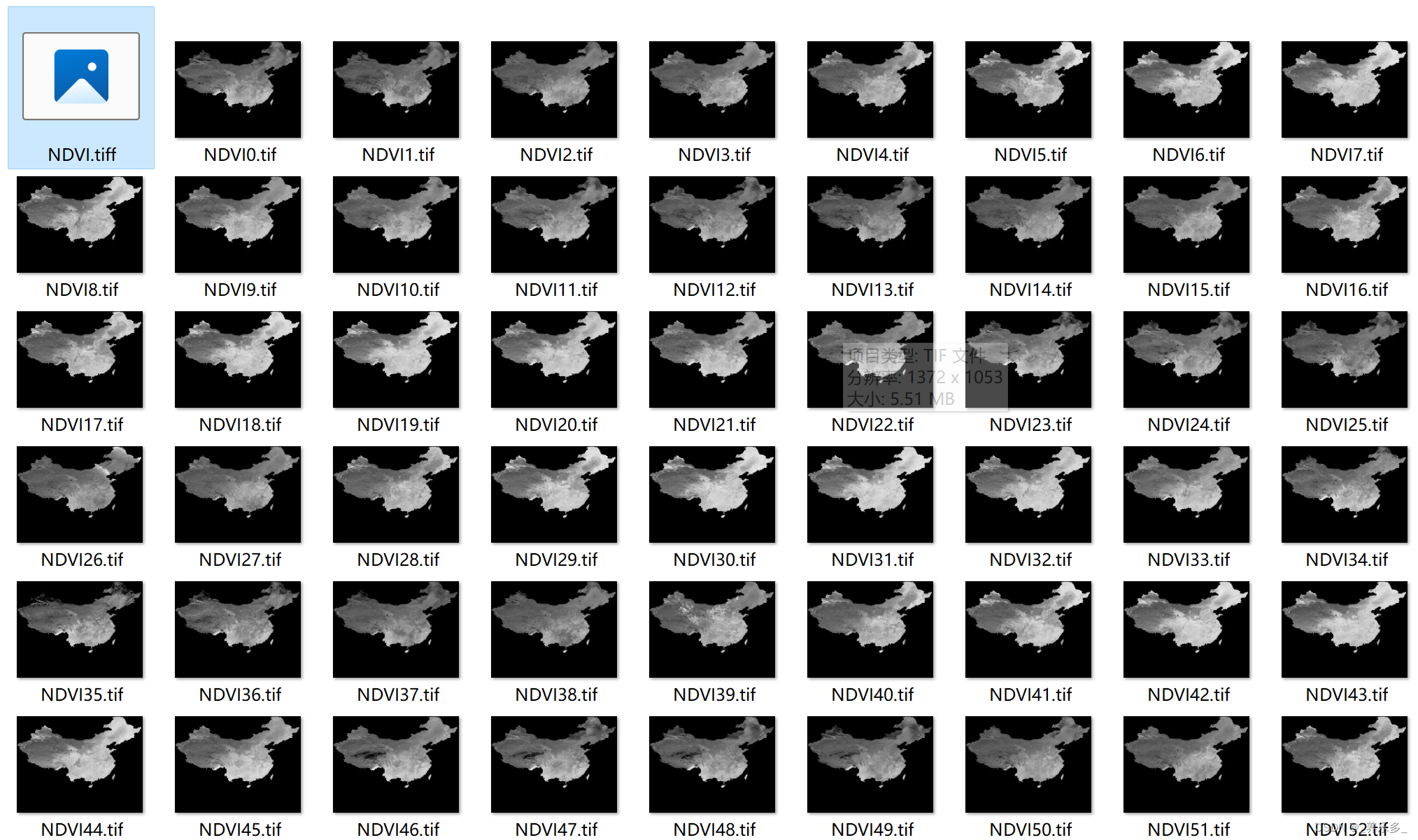
python:多波段遥感影像分离成单波段影像
作者:CSDN @ _养乐多_ 在遥感图像处理中,我们经常需要将多波段遥感影像拆分成多个单波段图像,以便进行各种分析和后续处理。本篇博客将介绍一个用Python编写的程序,该程序可以读取多波段遥感影像,将其拆分为单波段图像,并保存为单独的文件。本程序使用GDAL库来处理遥感影…...

天堂2游戏出错如何解决
运行游戏时出现以下提示:“the game may not be consistant because AGP is deactivated please activate AGP for consistancy” 这个问题的原因可能是由于您的显示卡的驱动或者主板的显示芯片组的驱动不是新开。或您虽然已经更新了您的显示卡的驱动程序࿰…...
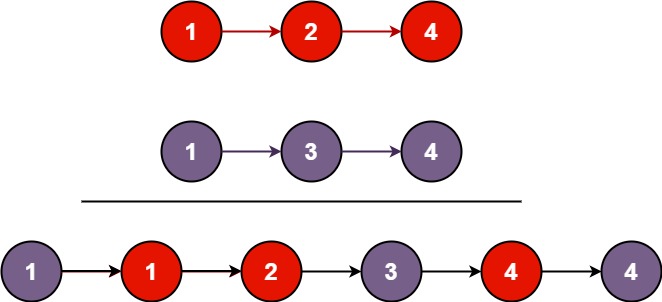
『力扣刷题本』:合并两个有序链表(递归解法)
一、题目 将两个升序链表合并为一个新的 升序 链表并返回。新链表是通过拼接给定的两个链表的所有节点组成的。 示例 1: 输入:l1 [1,2,4], l2 [1,3,4] 输出:[1,1,2,3,4,4]示例 2: 输入:l1 [], l2 [] 输出&#x…...

C++设计模式_12_Singleton 单件模式
在之前的博文C57个入门知识点_44:单例的实现与理解中,已经详细介绍了单例模式,并且根据其中内容,单例模式已经可以在日常编码中被使用,本文将会再做梳理。 Singleton 单件模式可以说是最简单的设计模式,但由…...
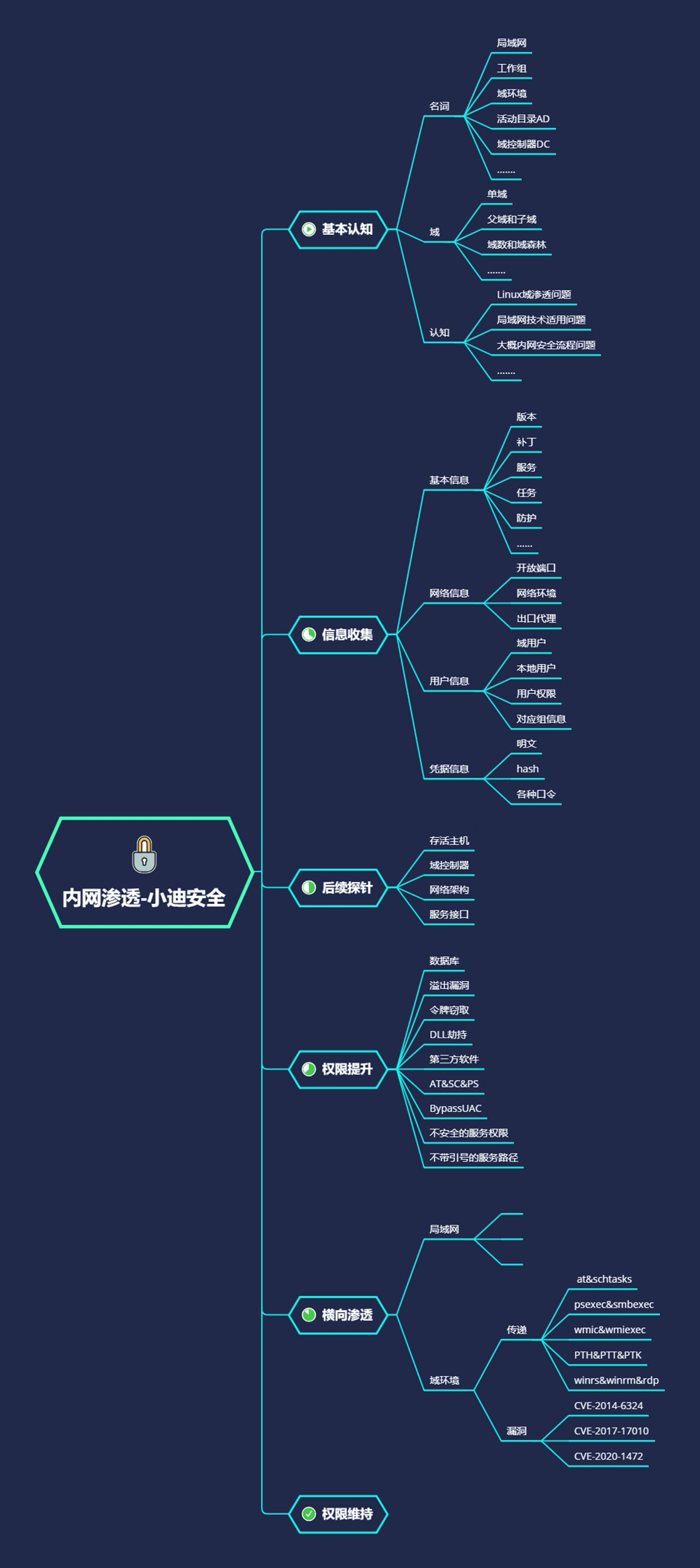
67 内网安全-域横向smbwmi明文或hash传递
#知识点1: windows2012以上版本默认关闭wdigest,攻击者无法从内存中获取明文密码windows2012以下版本如安装KB2871997补丁,同样也会导致无法获取明文密码针对以上情况,我们提供了4种方式解决此类问题 1.利用哈希hash传递(pth,ptk等…...

面向对象(类/继承/封装/多态)详解
简介: 面向对象编程(Object-Oriented Programming,OOP)是一种广泛应用于软件开发的编程范式。它基于一系列核心概念,包括类、继承、封装和多态。在这篇详细的解释中,我们将探讨这些概念,并说明它们如何在P…...

【Python机器学习】零基础掌握GradientBoostingRegressor集成学习
如何精准预测房价? 当人们提到房价预测时,很多人可能会想到房地产经纪人或专业的评估师。但是,有没有一种更科学、更精确的方法来预测房价呢?答案是有的,这就要用到机器学习中的一种算法——梯度提升回归(Gradient Boosting Regressor)。 假设现在有一组房屋数据,包括…...

【tio-websocket】12、应用层包—Packet
Packet 介绍 Packet 是用于表述业务数据结构的,我们通过继承 Packet 来实现自己的业务数据结构,对于各位而言,把 Packet 看作是一个普通的 VO 对象即可。 public class Packet implements java.io.Serializable, Cloneable {private static Logger log = LoggerFac…...

OpenCV官方教程中文版 —— 模板匹配
OpenCV官方教程中文版 —— 模板匹配 前言一、原理二、OpenCV 中的模板匹配三、多对象的模板匹配 前言 在本节我们要学习: 使用模板匹配在一幅图像中查找目标 函数:cv2.matchTemplate(),cv2.minMaxLoc() 一、原理 模板匹配是用来在一副大…...

如何为3D模型设置自发光材质?
1、自发光贴图的原理 自发光贴图是一种纹理贴图,用于模拟物体自发光的效果。其原理基于光的发射和反射过程。 在真实世界中,物体自发光通常是由于其本身具有能够产生光的属性,如荧光物质、发光材料或光源本身。为了在计算机图形中模拟这种效…...
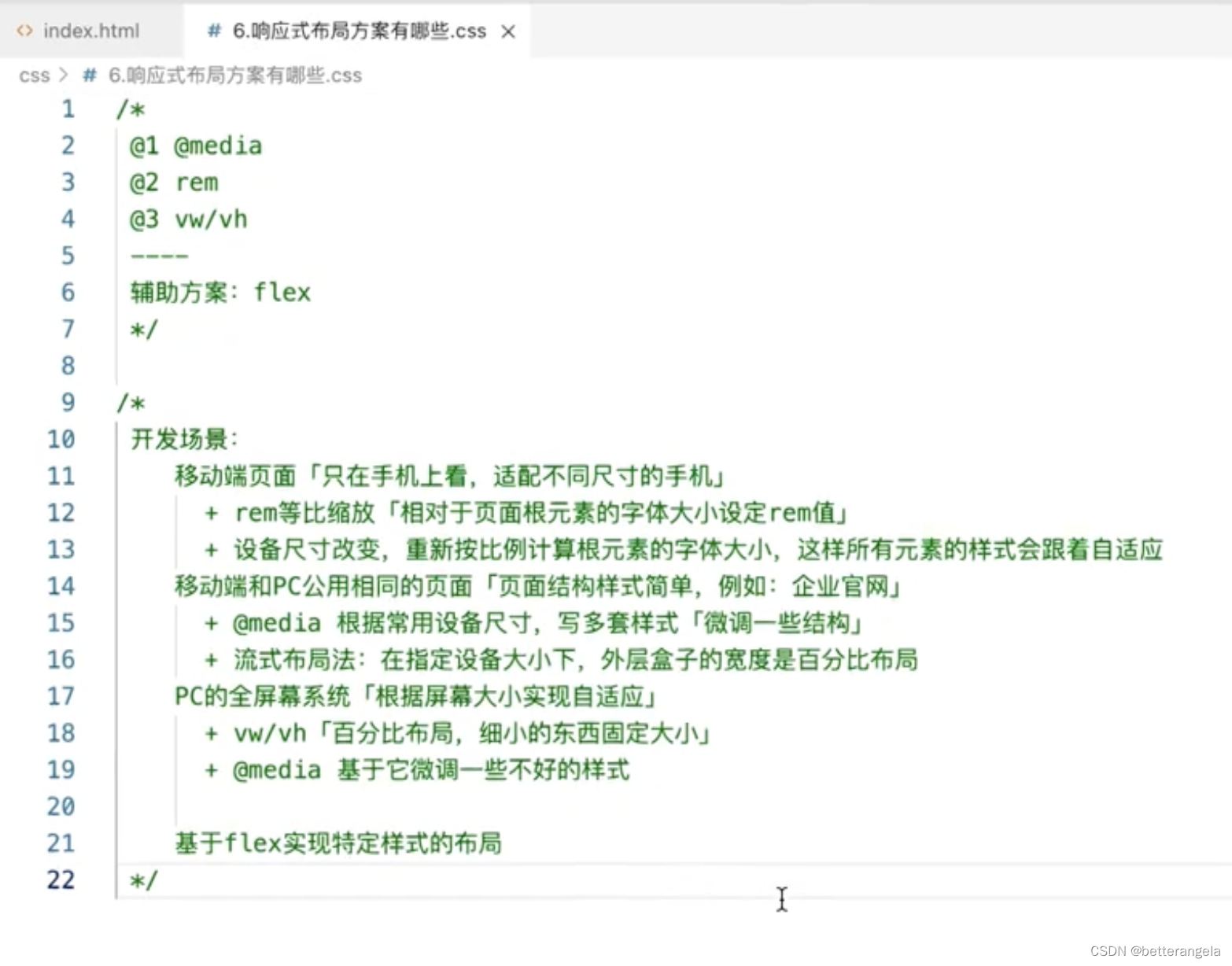
UI组件库基础
UI组件库 全局组件* 全局注册组件 & 并且使用了require.context 模块化编程 & webpack打包 const install(Vue)>{const contextrequire.context(.,true,/\.vue$/)context.keys().forEach(fileName>{const modulecontext(fileName)Vue.component(module.default.n…...

数据结构与算法之矩阵: Leetcode 48. 旋转矩阵 (Typescript版)
旋转图像 https://leetcode.cn/problems/rotate-image/ 描述 给定一个 n n 的二维矩阵 matrix 表示一个图像。请你将图像顺时针旋转 90 度。你必须在 原地 旋转图像,这意味着你需要直接修改输入的二维矩阵。请不要 使用另一个矩阵来旋转图像。 示例 1 输入&…...
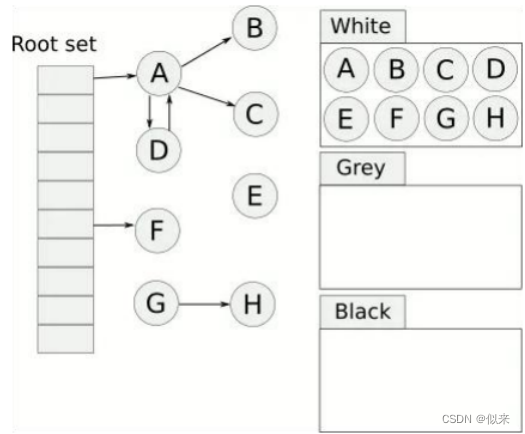
大厂面试题-JVM中的三色标记法是什么?
目录 问题分析 问题答案 问题分析 三色标记法是Java虚拟机(JVM)中垃圾回收算法的一种,主要用来标记内存中存活和需要回收的对象。 它的好处是,可以让JVM不发生或仅短时间发生STW(Stop The World),从而达到清除JVM内存垃圾的目的ÿ…...
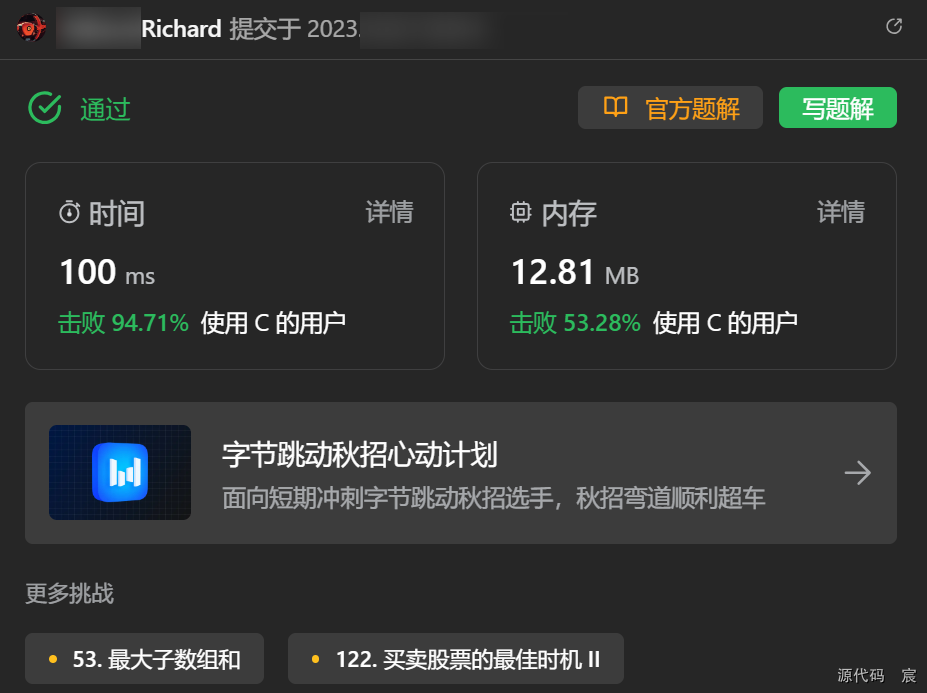
Leetcode—121.买卖股票的最佳时机【简单】
2023每日刷题(十一) Leetcode—17.电话号码的字母组合 枚举法题解 参考自灵茶山艾府 枚举法实现代码 int maxProfit(int* prices, int pricesSize){int i;int max 0;int minPrice prices[0];for(i 1; i < pricesSize; i) {int tmp prices[i] -…...

【云原生】portainer管理多个独立docker服务器
目录 一、portainer简介 二、安装Portainer 1.1 内网环境下: 1.1.1 方式1:命令行运行 1.1.2 方式2:通过compose-file来启动 2.1 配置本地主机(node-1) 3.1 配置其他主机(被node-1管理的节点服务器&…...

Command集合
Command集合 mysql相关命令 查看mysql的状态 sudo netstat -tap | grep mysql 启动mysql sudo service mysql start 停止mysql sudo service mysql stop 重启mysql sudo service mysql restart 指定端口号,客户端连接mysql sudo mysql -h127.0.0.1 -uroot -p red…...

【网络】每天掌握一个Linux命令 - iftop
在Linux系统中,iftop是网络管理的得力助手,能实时监控网络流量、连接情况等,帮助排查网络异常。接下来从多方面详细介绍它。 目录 【网络】每天掌握一个Linux命令 - iftop工具概述安装方式核心功能基础用法进阶操作实战案例面试题场景生产场景…...
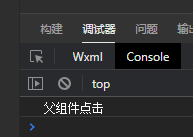
微信小程序之bind和catch
这两个呢,都是绑定事件用的,具体使用有些小区别。 官方文档: 事件冒泡处理不同 bind:绑定的事件会向上冒泡,即触发当前组件的事件后,还会继续触发父组件的相同事件。例如,有一个子视图绑定了b…...

【HarmonyOS 5.0】DevEco Testing:鸿蒙应用质量保障的终极武器
——全方位测试解决方案与代码实战 一、工具定位与核心能力 DevEco Testing是HarmonyOS官方推出的一体化测试平台,覆盖应用全生命周期测试需求,主要提供五大核心能力: 测试类型检测目标关键指标功能体验基…...
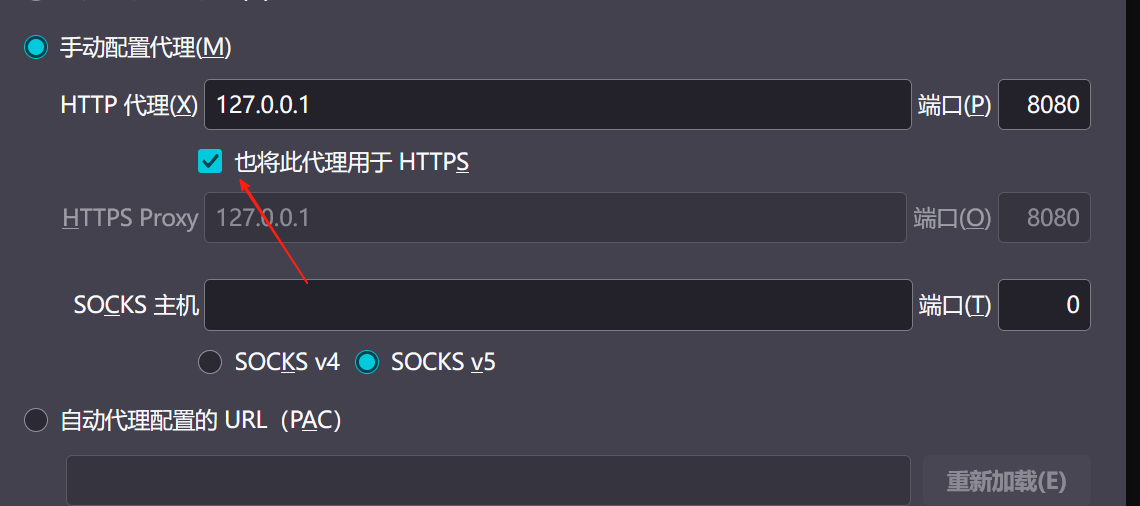
【2025年】解决Burpsuite抓不到https包的问题
环境:windows11 burpsuite:2025.5 在抓取https网站时,burpsuite抓取不到https数据包,只显示: 解决该问题只需如下三个步骤: 1、浏览器中访问 http://burp 2、下载 CA certificate 证书 3、在设置--隐私与安全--…...

ArcGIS Pro制作水平横向图例+多级标注
今天介绍下载ArcGIS Pro中如何设置水平横向图例。 之前我们介绍了ArcGIS的横向图例制作:ArcGIS横向、多列图例、顺序重排、符号居中、批量更改图例符号等等(ArcGIS出图图例8大技巧),那这次我们看看ArcGIS Pro如何更加快捷的操作。…...

A2A JS SDK 完整教程:快速入门指南
目录 什么是 A2A JS SDK?A2A JS 安装与设置A2A JS 核心概念创建你的第一个 A2A JS 代理A2A JS 服务端开发A2A JS 客户端使用A2A JS 高级特性A2A JS 最佳实践A2A JS 故障排除 什么是 A2A JS SDK? A2A JS SDK 是一个专为 JavaScript/TypeScript 开发者设计的强大库ÿ…...

CSS | transition 和 transform的用处和区别
省流总结: transform用于变换/变形,transition是动画控制器 transform 用来对元素进行变形,常见的操作如下,它是立即生效的样式变形属性。 旋转 rotate(角度deg)、平移 translateX(像素px)、缩放 scale(倍数)、倾斜 skewX(角度…...

【从零开始学习JVM | 第四篇】类加载器和双亲委派机制(高频面试题)
前言: 双亲委派机制对于面试这块来说非常重要,在实际开发中也是经常遇见需要打破双亲委派的需求,今天我们一起来探索一下什么是双亲委派机制,在此之前我们先介绍一下类的加载器。 目录 编辑 前言: 类加载器 1. …...

苹果AI眼镜:从“工具”到“社交姿态”的范式革命——重新定义AI交互入口的未来机会
在2025年的AI硬件浪潮中,苹果AI眼镜(Apple Glasses)正在引发一场关于“人机交互形态”的深度思考。它并非简单地替代AirPods或Apple Watch,而是开辟了一个全新的、日常可接受的AI入口。其核心价值不在于功能的堆叠,而在于如何通过形态设计打破社交壁垒,成为用户“全天佩戴…...

Python竞赛环境搭建全攻略
Python环境搭建竞赛技术文章大纲 竞赛背景与意义 竞赛的目的与价值Python在竞赛中的应用场景环境搭建对竞赛效率的影响 竞赛环境需求分析 常见竞赛类型(算法、数据分析、机器学习等)不同竞赛对Python版本及库的要求硬件与操作系统的兼容性问题 Pyth…...
